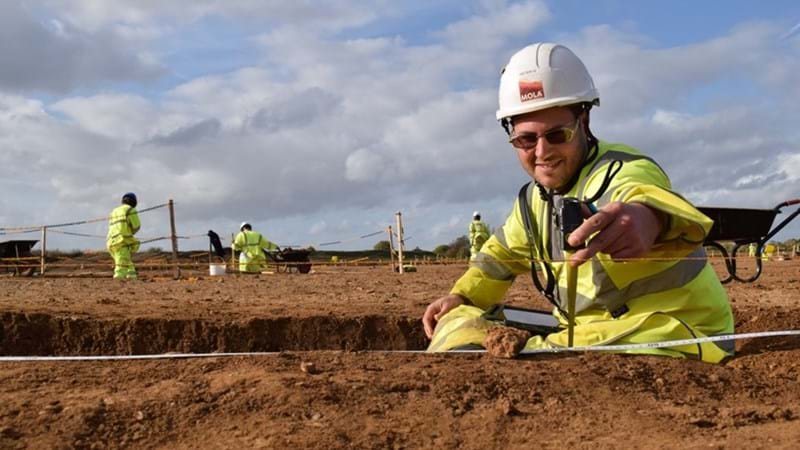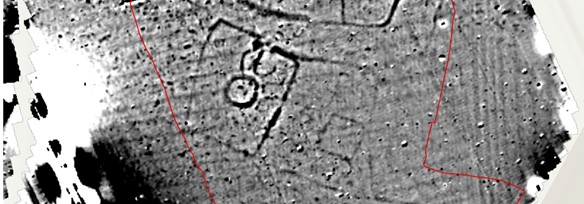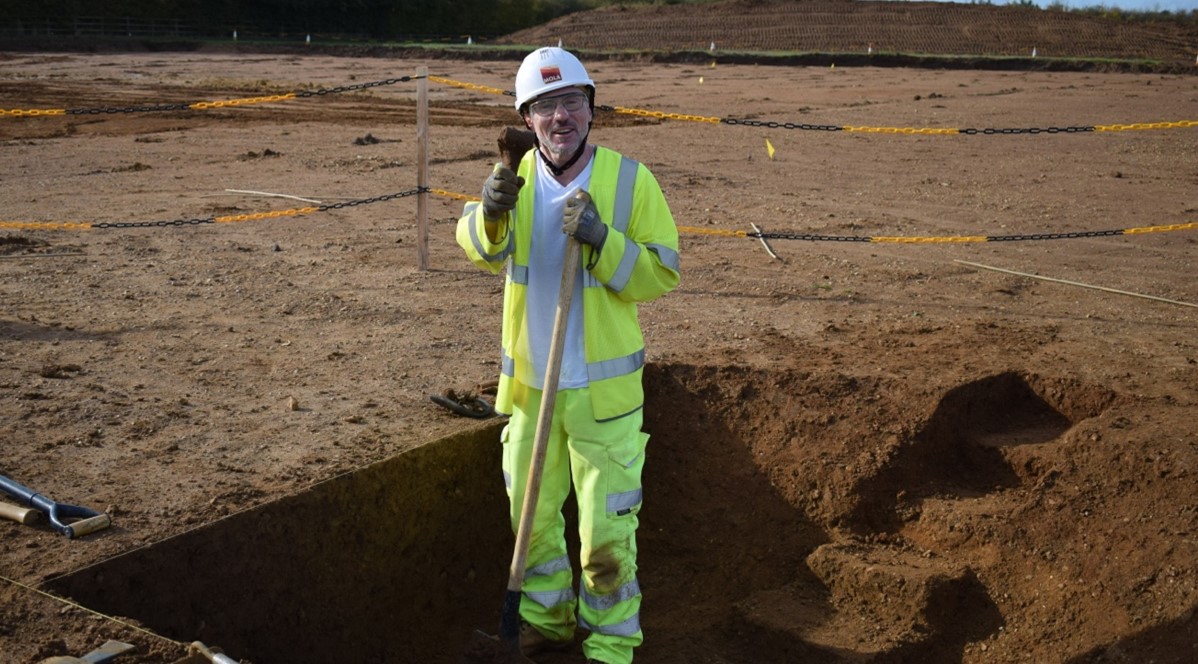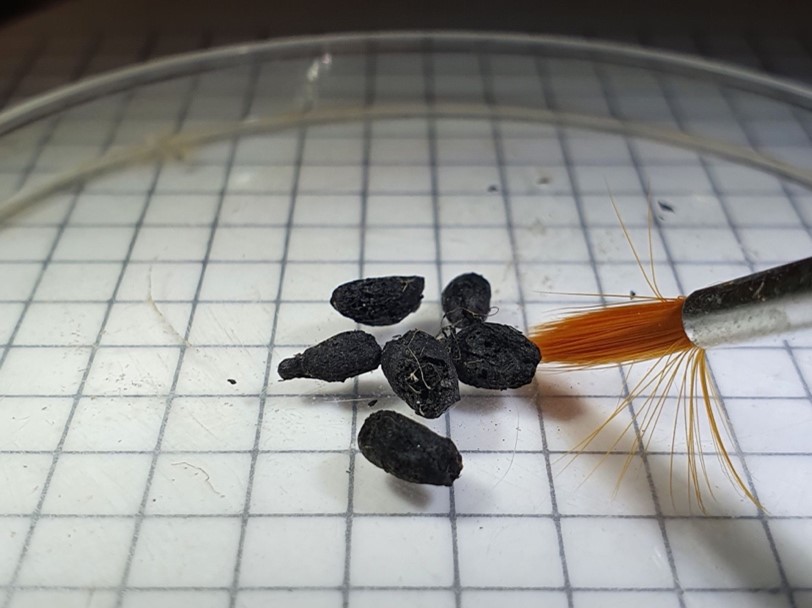Why do you need archaeologists when you're building a road?
Published
02 Nov 2022
Before construction on our A428 Black Cat to Caxton Gibbet improvements can begin, we work with archaeologists to carry out investigations along the proposed route.

Share this article
Most archaeological work in the UK takes place because of infrastructure and construction projects, such as the building of new roads or houses. This is developer-led archaeology, and that’s where the Museum of London Archaeology (MOLA) come in!
Developer-led archaeology is really important because it gives archaeologists the opportunity to excavate large areas, often including multiple sites. This means we can build up a much deeper understanding of how a whole landscape would have looked in the past. Often, these discoveries would never have been made without the development. These findings are then shared through various events and activities, creating opportunities for local people to discover more about their area’s past.
The role of archaeology in development projects is to identify, record and preserve any archaeological remains - and to share what has been found with the public! Because MOLA carries out all their work before construction begins, there also won’t be any unexpected archaeological finds which could cause delays later on.
But what exactly do MOLA do? Here’s an insider guide to developer-led archaeology currently underway.
Step 1: Identification
The first thing to be done is to identify where there might be archaeology.
To do this MOLA use lots of different types of evidence – they visit local archives to view old maps and photographs of the area. They also use historic documents and records. Did you know people have been recording archaeological finds and monuments since at least the end of the Middle Ages? One very useful source are reports from previous excavations in the area. On the A428, these different types of evidence have given us clues as to what might be lying hidden under the fields of Cambridgeshire and Bedfordshire…
This process also helps plan how long excavations will take, the different methods that will be used to record the archaeology, and even what work will need to be done after the dig is completed. All before a trowel’s been lifted!
Step 2: Evaluation
Once it has been identified where there might be archaeology, the evaluation stage is carried out. Using different types of archaeological survey, such as geophysics and trial trenching, sites of interest within the excavation area can be identified.
Evaluation for the A428 excavations were carried out in 2020. Geophysical surveys were very useful as they showed us archaeological sites which has been buried for hundreds or thousands of years. MOLA then used targeted trial trenches to understand how much archaeology was still remaining below the surface.
Take a look at just this small section of the geophysical survey, where would you put in trial trenches?

[Image: Geophysical survey result]
Only a small section of a site with trial trenches is excavated, because areas based on the geophysics can be targeted. Some of the finds made from the trial trenches, such as pieces of pottery, give us an early idea of when people were living or working at the site. And of course, some of our trial trenches have nothing in them! This helps us rule out areas which we already thought might not contain any archaeological remains based on the geophysics.
Step 3: Mitigation
The main stage of excavations in developer-led archaeology is called mitigation. Here, archaeologists excavate the sites identified through the evaluation. They record finds and features and slowly begin to build up a picture of how the area would have looked in the past.
On the A428, we are even getting some early finds which indicate the people living in Cambridgeshire and Bedfordshire around 2000 years ago were accomplished cooks. In one large pit we have found what looks like the rubbish from a big communal meal, it is full of animal bone and even cooking vessels. Delicious!

[Image: Animal bone]
Step 4: Post excavation
Archaeology doesn’t stop when the excavations finish! There is lots more work to be done in what is called the post-excavation process. This involves everything from conserving and analysing pottery, to processing soil samples. It’s also where some of the most fascinating finds are made! Post-excavation work carried out for our first stage of excavations on the A428 (the Roman Trading Post) showed evidence that people were possibly brewing their own beer!

[Image: Burnt grains]
Want to be the first to find out about developments in our excavations? You’re in luck! We’re really excited to bringing you news direct from the trenches along the A428 scheme – our archaeologists in the field will keep you up to date with the latest finds and features via social media. You can follow along by visiting our Facebook and Twitter pages!
